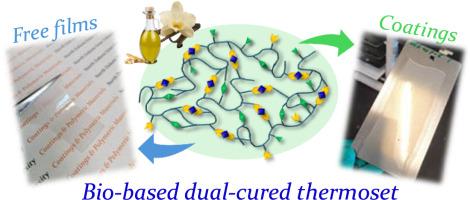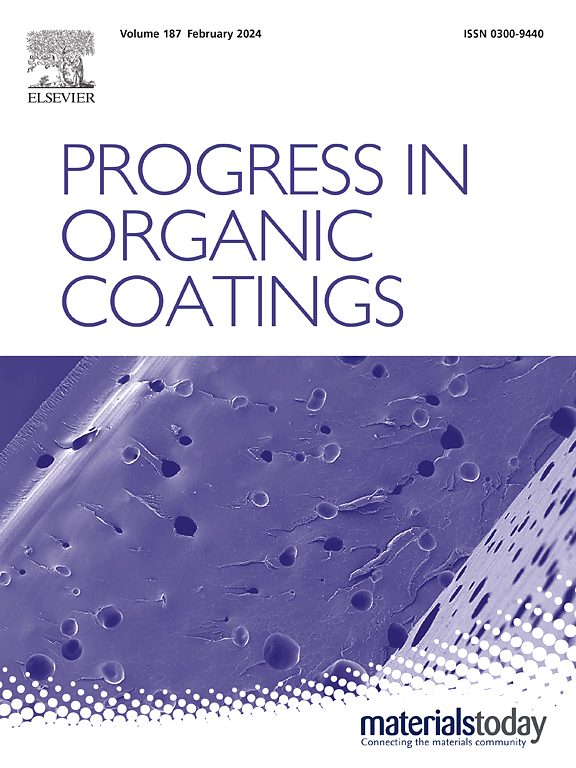Tough bio-based thermosets with dual curing capability via epoxy and allylic functionality
IF 6.5
2区 材料科学
Q1 CHEMISTRY, APPLIED
引用次数: 0
Abstract
Acrylic monomer from high oleic soybean oil (HO-SBM) was combined with vanillin-derived aromatic counterpart, 2-glycidoxy-5-vinylanisole (GVA), in chain copolymerization to design tough biobased thermosets with a dual-curing capability. Under specified conditions, a polymer network can be formed by selective cross-linking of epoxy groups of GVA or HO-SBM allylic groups as well as dual-curing via epoxy-amine and autoxidation mechanisms simultaneously. Glass transition temperature of the synthesized copolymers increases with the GVA content, although the values fall in a rather narrow range (−10 °C to 7 °C).
Thermosets cured via epoxy-amine and dual-curing have a significantly denser network when compared to autooxidation. Such an increase in cross-link density led to improved chemical (solvent) resistance and hardness of thermoset coatings. At the same time, a higher GVA fraction in the chain (from 37 to 44 wt%) noticeably increases Young's modulus of thermosets (up to 235 MPa). A substantial modulus increase at the rubbery plateau was observed for epoxy-amine and dual-curing thermosets with 44 wt% of GVA.

坚韧的生物基热固性塑料,具有环氧和烯丙基双重固化功能
高油酸大豆油中的丙烯酸单体(HO-SBM)与香兰素衍生的芳香族对应物 2-缩水甘油醚-5-乙烯基苯甲醚(GVA)通过链式共聚设计出了具有双重固化能力的坚韧生物基热固性塑料。在特定条件下,通过选择性交联 GVA 的环氧基团或 HO-SBM 烯丙基团,以及同时通过环氧胺和自氧化机制进行双重固化,可形成聚合物网络。合成共聚物的玻璃化温度随 GVA 含量的增加而升高,尽管其值范围很窄(-10 °C 至 7 °C)。这种交联密度的增加提高了热固性涂料的耐化学(溶剂)性和硬度。同时,链中更高的 GVA 部分(从 37% 到 44%)明显增加了热固性塑料的杨氏模量(高达 235 兆帕)。环氧胺和双固化热固性塑料的 GVA 含量为 44 wt%时,在橡胶高原上的模量大幅增加。
本文章由计算机程序翻译,如有差异,请以英文原文为准。
求助全文
约1分钟内获得全文
求助全文
来源期刊

Progress in Organic Coatings
工程技术-材料科学:膜
CiteScore
11.40
自引率
15.20%
发文量
577
审稿时长
48 days
期刊介绍:
The aim of this international journal is to analyse and publicise the progress and current state of knowledge in the field of organic coatings and related materials. The Editors and the Editorial Board members will solicit both review and research papers from academic and industrial scientists who are actively engaged in research and development or, in the case of review papers, have extensive experience in the subject to be reviewed. Unsolicited manuscripts will be accepted if they meet the journal''s requirements. The journal publishes papers dealing with such subjects as:
• Chemical, physical and technological properties of organic coatings and related materials
• Problems and methods of preparation, manufacture and application of these materials
• Performance, testing and analysis.
 求助内容:
求助内容: 应助结果提醒方式:
应助结果提醒方式:


